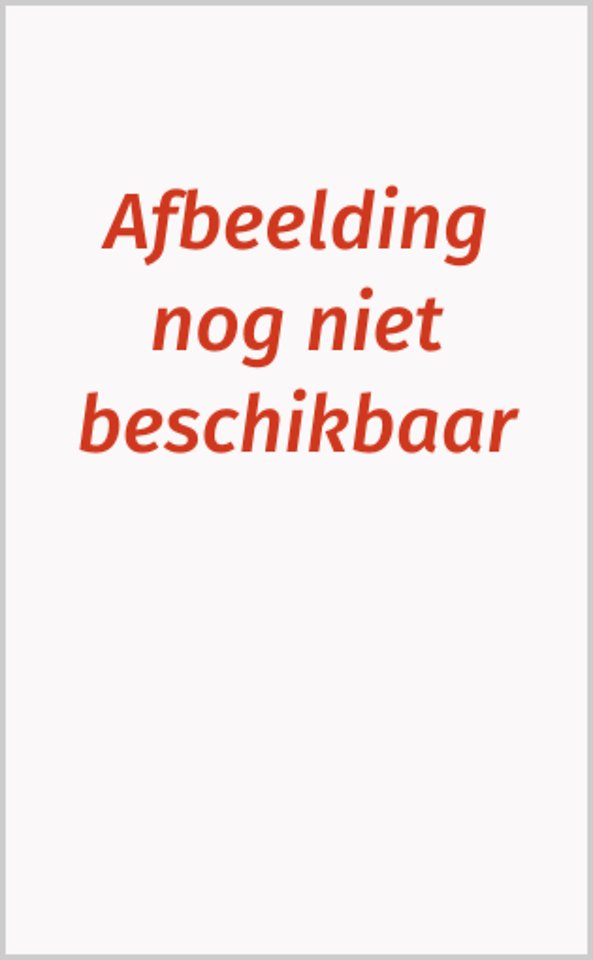


Dr. Alf Lodewijk Smolders MBA promoveerde op 28 maart 2019 op de rol van vertrouwen in contractrelaties.
Meer over Alf Lodewijk SmoldersTrust unravelled in inter-organisational relationships in a regulated tender environment
Paperback Engels 2019 1e druk 9789463840163Samenvatting
Scientists say that trust in inter-organisational relationships leads to high performance, project success, and better quality in construction. The rail sector is highly regulated by the Directives from Europe and domestic law. The Dutch rail maintenance market consists of one monopsony (or buying monopoly) which has monopsony power and as countervailing power an oligopoly (four rail maintenance contractors).
The research question is: What key trust factors affects in the inter-organisational relationships in a regulated tender environment and monopsony-oligopoly markets? The research question is answered by three steps: literature review, caste study research, and simulation games. From literature review key trust factors and its sub factors are identified on multiple layers. Mostly, these key trust factors relate to single actors. The key trust factors and their sub factors are visualized in the proposed multi-layered framework of trust and distrust, which allows for the calculation of a level of trust.
The case study research takes a dyadic perspective, observing trust interactions between two actors in the markets under study. The case study research includes of eight Dutch cases and one Swiss case where both actors from the inter-organisational relations are interviewed. The multi-layered framework of trust and distrust is used to determine the level of trust of each actor. The cases show how financial incentives, external pressure, and preferred management style shape trust. The influence of these contexts is further tested in the simulation games.
They show in more detail what behaviour of the actors determines the level of trust in the inter-organisational relationship. Concluding, this research proposes a framework for the analysis of key trust factors and sub factors driving trust inter-organisational interactions, based on monopsonic and oligopolistic markets. The framework allows to calculate levels of trust as a snapshot in an inter-organisational relationship. It could be used as a trust development model in inter-organisational relationships.
Specificaties
Lezersrecensies
Inhoudsopgave
U kunt van deze inhoudsopgave een PDF downloaden
Samenvatting 15
Foreword 19
1 Trust for performance: Introduction 21
1.1 Research motivation 21
1.2 Research aim 23
1.3 Contribution 23
1.3.1 Scientific contribution 23
1.3.2 Practical contribution 23
1.4 Structure of this dissertation 24
2 Toward trusted outcomes: Research Design 25
2.1 Introduction 25
2.2 Theoretical exploration 25
2.2.1 Definition of trust 25
2.2.2 Concepts of trust and distrust 26
2.2.3 Framework for trust in construction contracting 27
2.2.4 Pinto’s conceptual framework of trust in project management 28
2.2.5 Eight propositions on trust and distrust 29
2.3 Research framework 30
2.4 Research question 31
2.5 Research process and methodology 31
3 Building trust on trust: Literature study 33
3.1 Introduction 33
3.2 Perspectives on trust 34
3.3 Multi-layered trust 38
3.4 Key trust factors 40
3.4.1 Identified key trust factors 41
3.4.2 System layer 43
3.4.3 Cognition layer 44
3.4.4 Personal layer 44
3.4.5 Overview of key trust factors 47
3.5 Multi-layered concept of trust and distrust 48
3.5.1 Concepts of trust and distrust 48
3.5.2 Concepts of trust and distrust combined with key trust factors 50
3.5.3 Calculating the level of trust 51
3.5.4 General state of trust 54
3.6 Conclusion 55
4 Trusting reality to speak: Empirical analysis 57
4.1 Introduction 57
4.2 Case selection 58
4.3 Data collection 59
4.3.1 Case study evidence 59
4.3.2 The interview process 60
4.3.3 Data processing 60
4.4 Case analysis 61
4.4.1 Case 1 61
4.4.2 Case 2 62
4.4.3 Case 3 64
4.4.4 Case 4 65
4.4.5 Case 5 67
4.4.6 Case 6 68
4.4.7 Case 7 70
4.4.8 Case 8 71
4.4.9 Swiss case 73
4.4.10 Results of the individual cases 74
4.5 Cross case analyses 75
4.5.1 Three best versus three worst performing cases 76
4.5.2 Additional cases versus primary selected cases 80
4.5.3 The Netherlands versus Switzerland 82
4.5.4 Finalised key trust factors 84
4.5.5 Identified mechanisms putting pressure on trust 86
4.6 Conclusion 91
4.6.1 Finalised key trust factors 91
4.6.2 Identified mechanisms 94
5 Trust, but verify: Simulation games 95
5.1 Introduction 95
5.2 Mechanism 1: limited funds 98
5.3 Mechanism 2: Interference from management 102
5.4 Mechanism 3: The effect of the preferred management style 106
5.5 Validated key trust factors 113
5.6 Conclusion 117
6 Moving trust forward: Conclusions and recommendations 121
6.1 Introduction 121
6.2 Multi-layered framework of trust and distrust 121
6.3 Evaluation of the research process 123
6.3.1 Literature review 123
6.3.2 Case study research 124
6.3.3 Simulation games 125
6.4 Practical relevance 127
6.5 Contribution to science and future research 128
Epilogue 131
Acknowledgements 135
About the author 137
Bibliography 139
Glossary 145
Appendices 147
Anderen die dit boek kochten, kochten ook
Rubrieken
- advisering
- algemeen management
- coaching en trainen
- communicatie en media
- economie
- financieel management
- inkoop en logistiek
- internet en social media
- it-management / ict
- juridisch
- leiderschap
- marketing
- mens en maatschappij
- non-profit
- ondernemen
- organisatiekunde
- personal finance
- personeelsmanagement
- persoonlijke effectiviteit
- projectmanagement
- psychologie
- reclame en verkoop
- strategisch management
- verandermanagement
- werk en loopbaan





